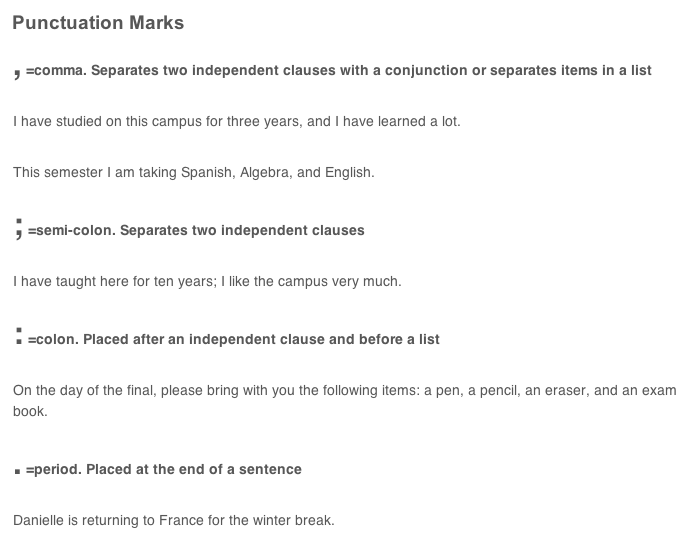
The No, It’s Not Arbitrary and Does Make Sense: Teaching the English Punctuation System article from busyteacher.org is a great place to review what you know and think you know about punctuation.
A true/false quiz is the best place to start.
1. You write a comma when you take a breath. True False
2. You write a colon before a list. True False
3. You write a period after a thought. True False
4. A letter S should always have an apostrophe before it. True False
5. A period should be written after an independent clause. True False
6. “Mother” and other important words should always be capitalized. True False
How many did you get right?
The rest of the article gives good examples of the right kinds of sentences and punctuation and is worth a review even if you think you’ve got punctuation down.
As my trusty AP Stylebook states, “There is no alternative to correct punctuation.” Sometimes it is just better to recast the sentence than to try to fix it.

